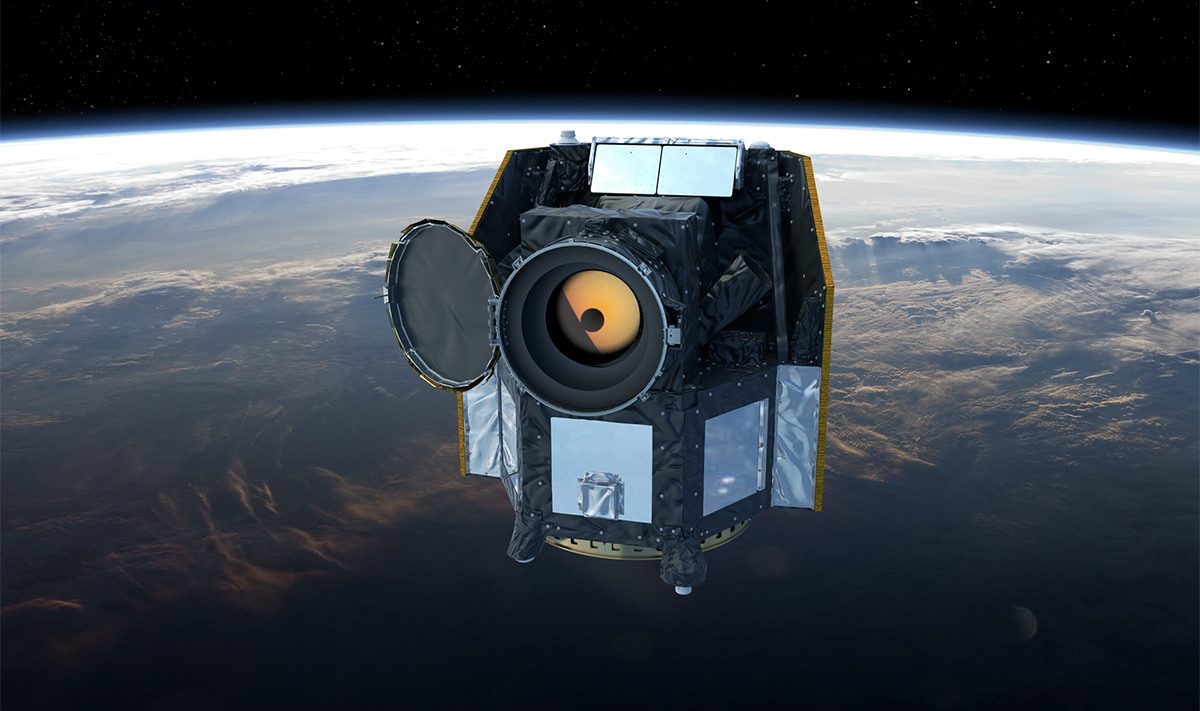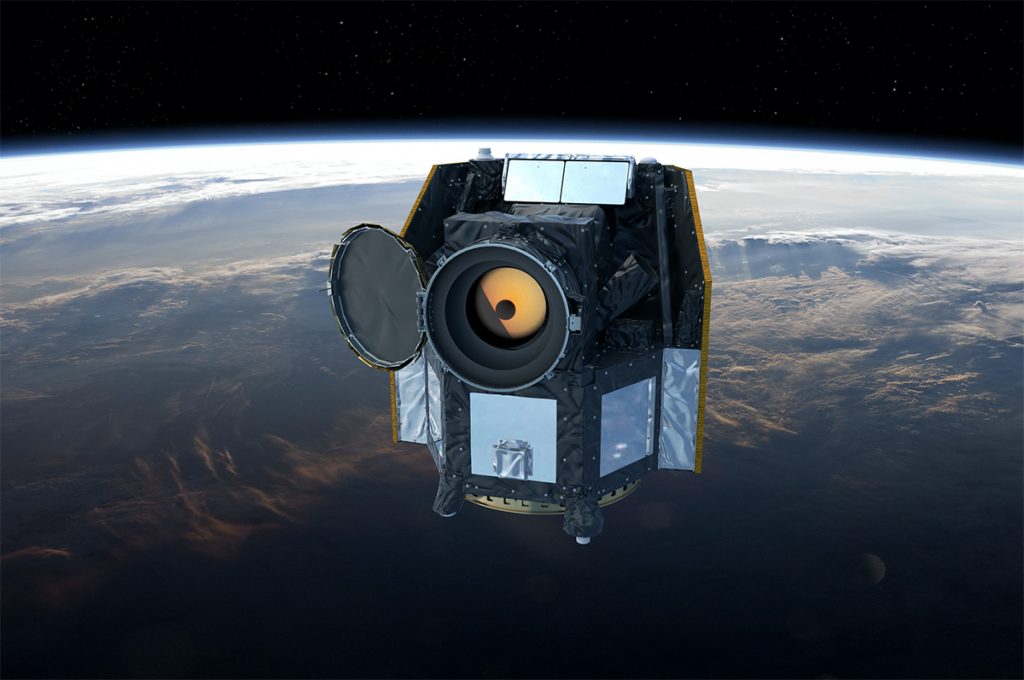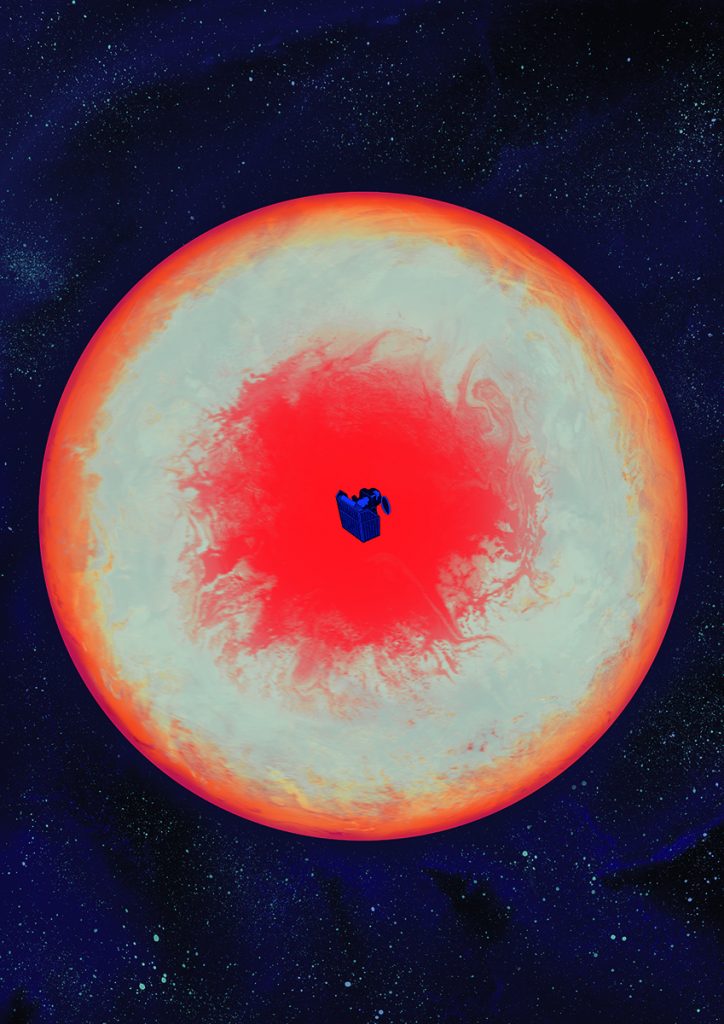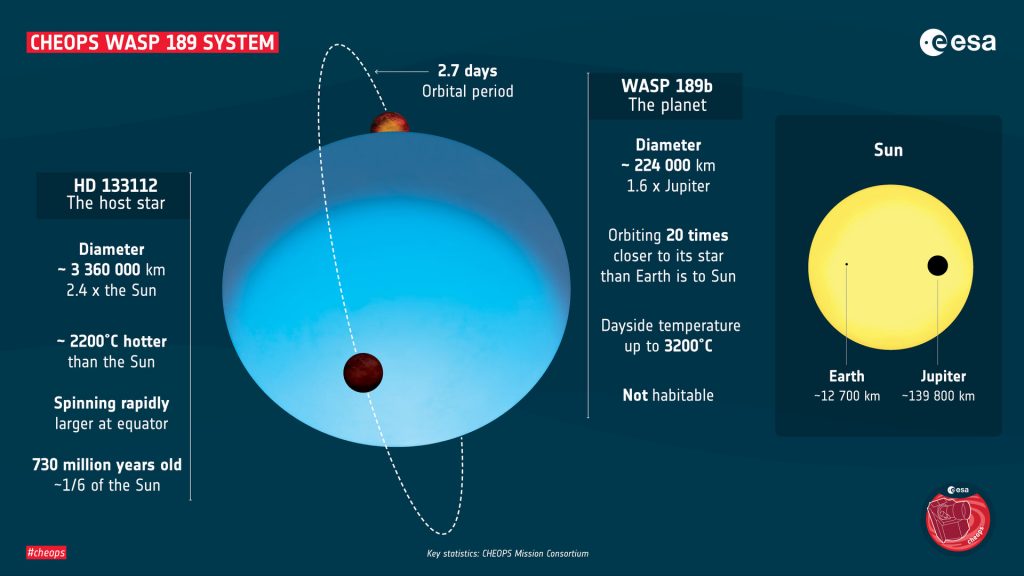First results from CHEOPS reveal an exoplanet with extreme conditions
The CHEOPS space telescope is living up to its promise: its first observations reveal the face of the exoplanet WASP-189b - a planet where extreme conditions prevail. CHEOPS is a European Space Agency (ESA) mission led by Swiss laboratories, with the participation of numerous French laboratories including IPGP-Université de Paris.

Publication date: 29/09/2020
Press, Research
Related teams :
Cosmochemistry, Astrophysics and Experimental Geophysics (CAGE)
Related themes : Origins










